-
Posts
20,849 -
Joined
-
Last visited
-
Days Won
49
Everything posted by CaaC (John)
-
First giant panda born in the Netherlands Wu Wen, a giant panda loaned to a Dutch zoo by China, has given birth in a first for the Netherlands, Ouwehands animal park announced Saturday. Mating took place in January and the cub, which belongs to Beijing just like the mother and father Xing Ya, was born on May 1. "The mother and her cub are staying in the maternity den and are doing well," the zoo in the central city of Rhenen said in a statement said. "This cub was born and conceived naturally," said Ouwehands owner Marcel Boekhoorn. "Male or female? The cub's gender will remain a surprise for the time being," he added. "The keepers are leaving Wu Wen and her cub alone. When the cub leaves the maternity den after a few months, we will be able to see what the gender is. "When that happens, the little giant panda will be named," Boekhoorn said. The cub will go to China after four years to join the breeding programme. The mother and father were loaned to the Netherlands in 2017 for 15 years. Giant pandas are found only in the wild in China where their habitat is shrinking. However, since 2016 they are no longer considered in danger of extinction but remain "vulnerable". https://www.msn.com/en-gb/news/offbeat/first-giant-panda-born-in-netherlands/ar-BB13vOQj
-
This Hungarian Village Welcomed Skull-Shaping Immigrants as The Roman Empire Crumbled As the Roman Empire drew to a dramatic collapse towards the end of the 5th century, ripples were felt across its former territories. Balances shifted as new powers rushed to fill the vacuums Rome's retreats left behind. The changes to the everyday lives of the people are far less well documented, but a cemetery in Pannonia Valeria - in what is now Hungary - is shedding light on the cultural upheaval. And it seems that the founders of that community welcomed newcomers - and even adopted their customs, including modifying the shape of their skulls. During this time, "the population decreased and the settlement structure changed drastically. Communities fled to the western provinces with the promise of safety, while others sought refuge in forts and cities looking for protection," the researchers wrote in their paper. "The newly arriving groups also founded rural settlements often in connection to the former Roman infrastructure, such as roads and fortified places." Until around 470 CE, a site now called Mözs-Icsei dűlő was the burial ground of just such a settlement. Its 96 graves have been well documented, with work going back decades. But archaeologists in Germany and Hungary have now closely examined the remains of 87 individuals, analysing the strontium isotopes in the bones to figure out how the community came together. That's because some stable isotopes - like strontium - are taken up by plants from the soil. When humans eat these plants, the isotopes can replace some of the calcium in teeth and bones, which can then be dated and matched to geological regions known to have particular isotope ratios. Using this technique, the team was able to identify three distinct populations across two or three generations buried in the Mözs-Icsei dűlő cemetery. The first population is a small founder population. They were buried in Roman-style brick graves, with Roman and Hun style grave goods, and the strontium isotope ratios in their bones indicated a largely local diet. The second is a foreign group of 12 individuals who seem to have arrived at the community around a decade after the founders. They all had similar strontium isotope ratios, indicating that they had a shared origin. Ten of them also had modified skulls, suggesting they practised head shaping - the use of tight cloth bindings in infancy to elongate the still-hardening skull. We still don't know why ancient cultures practised cranial modification. Although it's dying out today, it's an ancient practice, and there's evidence for it dating back thousands of years all around the world - and, interestingly, it seems to have no effect on cognitive function. The third, slightly later group suggests that the customs of both earlier populations seem to blend together in the following generation. Not only were there founder-style grave goods included in later burials, but head shaping also seems to have exploded in popularity. In all, the 96 graves contained 51 individuals with deliberately modified skulls, marking the site as one of the biggest concentrations of artificial cranial deformation in the region. As we have previously reported, reasons for the practice seem varied globally throughout history - from a marker of social status to a side-effect of binding a baby's soft head to protect it while it grows. Or maybe some people just thought it looked really cool. Whatever the reasons for it, the practice here is a beautiful example of how a community can grow and thrive under regional strife, joining their differences to build something new together. "The community .. accepted and integrated men, women, and children of different geographical and cultural backgrounds during the two to three generations of its existence. The isotope data indicate that residential changes played a remarkable role and occurred not only on an individual basis but also in groups of a shared cultural background and lifestyle," the researchers wrote in their paper. "Placed into the historical narrative, this could be understood as the emergence of a Roman-'Barbarian' Mischkultur (mixed culture), in which Romanised 'Barbarians' and 'barbarised' late Roman population groups were indistinguishable." The research has been published in PLOS One.
-
'Bodies left to rot on the streets': How this city became 'Latin America's Wuhan' SLIDES - 1/4 A month ago, Blanca Reyes received the call dreaded by so many. The hospital gave her the tragic news that her father had died. He had been diagnosed with coronavirus but it still came as a huge shock. "'What?' I said. 'That can't be right, he was stable. This was the last update you gave me'. And then the person continued: 'No, if you are Blanca Reyes and your father... he died. Please come to the hospital.'" Compounding her shock and grief in the weeks that have passed since, the hospital in Guayaquil, Ecuador, still can't find his body. Despite multiple phone calls and trips to the hospital, Blanca's been given no answers. A death certificate has been issued but no body to bury. Blanca speaks with quiet anger and grief about the way she has been treated. She suspects the government is trying to cover up the extent of its failure to handle the pandemic. "I have some theories. One is that they didn't tell the families because they didn't want to hand over the bodies in order to hide, in the beginning, the number of COVID-19 deaths." Authorities admitted to Sky News they have 120 bodies that have not been identified but could not account for bodies simply going missing in the system. Blanca's story is symptomatic of a complete collapse in the city where she lives in the wake of the COVID-19 pandemic. The nightmare we have all been dreading happened here. The government failed the people in their hour of greatest need and the health system was overwhelmed. It failed so badly that bodies were left to rot on the streets or in people's homes. When Cesar Galvez's father died, local authorities were too busy to take his body. They had to keep it in their home for three days. "We were helpless... no one to turn to, everything turned hard and even more for the relatives. Imagine having there a dead body and not being able to do anything. It is tough," said Cesar Galvez. The city of Guayaquil has been called Latin America's Wuhan, after the Chinese city where the virus started. It has been among the continent's worst hit. It's thought as many as 7,000 have died in this one city alone, although official figures, which count only those who tested positive for the virus before dying, are far lower. They are used to disposing of 50 bodies a day in normal times. As COVID-19 ravaged the city, that number rose to 500. Poverty, disorganisation, and the failure of officials to anticipate the crisis led to dystopian scenes of bodies being collected from the streets. Blanca waits for answers and a body to bury. She is in no doubt that the government could and should have done much more. "The authorities did not act on time, I believe my father got sick because there was no control at all. The airports were not shut down on time. "They did not even control the temperature of the passengers. This was known since January, first in China then Italy in February. They had two months to get ready and they did not do it." Her lament will be familiar to so many, far beyond Ecuador. https://www.msn.com/en-gb/news/world/bodies-left-to-rot-on-the-streets-how-this-city-became-latin-americas-wuhan/ar-BB13u7fQ
-
@Fusion
-
@Fusion was online yesterday having a wee look without posting but posted on March 8th about the game Man United 2-0 City, as @Berserker said he is not as active nowadays.
-
FFS @Bluewolf tell me this is a joke surely?
-
Science & Environment Antarctic meteorites yield global bombardment rate A team of UK scientists has provided a new estimate for the amount of space rock falling to Earth each year. It's in excess of 16,000kg. This is for meteorite material above 50g in mass. It doesn't take account of the dust that's continuously settling on the planet, and of course, just occasionally we'll be hit by a real whopper of an asteroid that will skew the numbers. But the estimate is said to give a good sense of the general quantity of rocky debris raining down from space. "The vast, vast majority of objects to hit the Earth are really small," explained Dr Geoff Evatt. "We're talking about objects for which, when they strike the ground, the fragments sum together to over 50g. So, typically, 50g-10kg in total. Objects bigger than this are very, very infrequent," the University of Manchester mathematician told BBC News. UK meteorite hunt thwarted by equipment damage 'Dinosaurs walked through Antarctic rainforests' Dancing gargantuan black holes perform on cue One of the other outcomes of the study - produced in conjunction with colleagues from Cambridge University, Imperial College London, and the British Antarctic Survey - is that it enables a risk assessment to be made for the entire planet. This reveals that the number of falls at the poles is about 60% of what you would expect at the equator. It explains why you would absolutely want to put any long-term contingency facilities at higher latitudes. The Global Seed Vault, for example, which aims to retain copies of Earth's plants in case of a crisis, is sited at 78 degrees North on the Svalbard archipelago. The new estimate, published in the journal Geology, grew out of the project to undertake the first UK-dedicated meteorite hunt in the Antarctic. Researchers involved in that effort wanted to be sure they would visit the most productive areas to perform such a quest. The White Continent is the place on Earth where most meteorites have been recovered - with good reason: the "black on white" contrast of fallen space rocks on snow and ice makes searching a lot easier. And hunters will typically go to places where the movement of the ice sheet concentrates the meteoritic material - so-called stranding zones. Dr Evatt and colleagues worked out how many objects ought to be in their chosen area - a place called the Outer Recovery Ice Fields, close to the Shackleton range of mountains in East Antarctica. And they were virtually bang on with their expectation, finding close to 120 meteorites in two systematic searches over 2019 and 2020. But having worked out a reliable flux for the number of falls at their chosen terrain, the scientists realised they could then use this knowledge to anchor a global assessment. This incorporated orbital mechanics - how Earth's gravity will pull in nearby passing material - to work out how rates might vary by latitude. The model outputs a grand total of about 17,000 falls a year. And this can be tested by looking at the data from fireball events. Satellites in orbit tracking the lightning in storms will also catch the blazing trail of a space rock plunging into the atmosphere. "Satellites monitor these explosions in the sky, working out the energy of the events and also the longitude and latitude of where they happen. And from this, you can see how they vary across the globe with latitude, and very nicely the curve you get from these fireballs fits with what we independently modelled using purely an applied mathematical approach," said Dr Evatt. Prof Sara Russell leads the planetary materials group at the Natural History Museum in London. She wasn't involved in the research but commented: "I think this is an amazing study, and this estimate sounds like it is in the right sort of ballpark. "We think a total of about 40,000 tonnes (so 40,000,000 kg) of extraterrestrial material falls to Earth each year, but the vast majority of this is in the form of tiny dust grains. "This is a very difficult measurement to make with any accuracy and only about half a dozen meteorites are actually seen to fall each year, but of course almost all meteorite falls are not observed because they fall in the sea, in unpopulated areas or just no-one is looking!" she told BBC News. https://www.bbc.co.uk/news/science-environment-52465237
-
@nudge, just played that, the wife was singing along with them and that is one of her favourite groups and ' Down On The Beach Tonight' is her favourite as that was playing in a German pub when I took her out for her first date.
-
Thanks a bunch, he used to be in Coronation Street (Geoffrey Hughes) as Eddy the Dustman.
-
Lucas Posted 13 hours ago (edited) Does @JOSHBRFC still post here? ___________________________________________________________________ Josh is still posting, he last posted on April 10th I think it was?
-
'Crazy beast' lived among last of dinosaurs A cat-sized mammal dubbed "crazy beast" lived on Madagascar among some of the last dinosaurs to walk the Earth, scientists have revealed. The 66-million-year-old fossil is described in the journal Nature. Its discovery challenges previous assumptions that mammals would have had to be very small - the size of mice - to survive alongside dinosaurs. Researchers say this individual animal weighed 3kg (6.6lbs) and had not reached its full adult size. Scientists think that the badger-like creature, known as Adalatherium, would have burrowed - helping it to evade predatory dinosaurs. This could explain how it evolved to such a size. Before mammals took over the Earth, they probably had to run and hide from the much larger dinosaurs that ruled our planet - not to mention crocodiles and constrictor snakes. Fossil 'wonder chicken' could be early fowl 'Dinosaurs walked through Antarctic rainforests' Ancient Africa home to three human-like species Scientists hope the find will help them understand how mammals developed into the diverse array of species that we see today. The name "Adalatherium" is translated from the Malagasy and Greek languages and means "crazy beast". Its discovery "bends and even breaks lots of rules", said David Krause of Denver Museum of Nature and Science, who led the research, https://www.bbc.co.uk/news/science-environment-52465584
-
Coronavirus: Fears for future of endangered chimps in Nigeria An award-winning conservationist says she fears for the future of some of the world's most endangered chimps. Devastated by hunting and deforestation, they now face a threat from coronavirus, says Rachel Ashegbofe Ikemeh, project director of The South-West/Niger Delta Forest Project. The pandemic is bringing to the fore issues such as wildlife trade and consumption, she says. And it's time for conservationists to speak up and advocate change. "There should be changes, there should be regulations, and there should be policies that would bring an end to wildlife trade, and especially the bushmeat markets," she told BBC News. With forests lost to farming and logging, chimpanzee habitat has been fast disappearing across Africa. And poaching is also a grave threat, with chimps hunted for their body parts or taken alive and sold as pets. The forests of southwestern Nigeria harbour populations of the most endangered of all chimp groups, the Nigeria-Cameroon chimpanzee subspecies (Pan troglodytes ellioti). About 100 chimpanzees live in two forested areas, making up an "extremely precious and extremely endangered" distinct population, says Rachel Ashegbofe Ikemeh, who has won a "Green Oscar" from the Whitley Fund for Nature for her work. She will use the money to work with the government to establish conservation areas and to advocate for tougher laws to protect wildlife. Many wildlife preservation laws in the region were created decades ago and are now in need of reform. A reserve in the Ise Forest has recently been approved by Nigeria's Ekiti state government, following years of campaigning. Despite this "good news", she fears for the chimps' future if coronavirus strikes. "The fears for the chimps are great because chimpanzees share about 98% of human genetics," she says. "They are very vulnerable to contracting or being infected by any disease that humans have." Coronavirus: Calls to protect great apes from the threat of infection Coronavirus: Great apes on lockdown over the threat of disease. It's not known if great apes can contract the virus, but precautionary measures are being taken. Gorilla tourism in Africa has been suspended, while sanctuaries for other apes, such as orangutans, have closed to the public. https://www.bbc.co.uk/news/science-environment-52471595
-
I see you made a video on Youtube about this, you didn't just join in here to get likes for your youtube video did you, if you did then I don't think you will be around long in TR365 by posting links for likes.
-
I was going to say welcome...but?
-
Make your own mask, found a hoodie hat in my draw I got from the £1 shop last year, cut the top off, a little bit of stitching here and there and bingo!!
-
Dancing gargantuan black holes perform on cue Astronomers have been able to test the key consequences of Einstein's theories by studying the way a couple of black holes move around each other. One of these objects is a true colossus - a hole weighing 18 billion times the mass of our Sun; the other not quite so big at "only" 150 million Sun masses. Scientists managed to predict their interactions very precisely. They did so by including their warping effects on space-time and by assuming the larger hole had a smooth "surface". The black hole pairing, known as OJ 287, exists about 3.5 billion light-years from Earth. Hubble delivers stunning 30th birthday picture Twisting jet observed a supermassive black hole Gravitational waves: So many new toys to unwrap Scientists have long recognised a sudden brightening from this system that occurs twice every 12 years. The outburst of energy is equivalent to a trillion suns turning on at once in the holes' host galaxy. The best explanation for this extraordinary behaviour is that the smaller object is routinely crashing through a disc of gas and dust that's accreting on to its larger companion, heating the inspiraling material to extremely high temperatures in the process. But this flaring is somewhat irregular. Sometimes the brightening episodes in the 12-year period occur as little as one year apart; other times, as much as 10 years apart. It speaks to the complexity of the path the small hole takes around its partner - a complexity the research team has now built into a highly sophisticated model. "The orbit of the smaller black hole precesses. That's why the times of the impacts vary," explained Prof Mauri Valtonen from the University of Turku, Finland. "Already back in 1996, we had a model that predicted more or less what would happen. But we've just got more and more accurate," he told BBC News. One of the updated model's important parameters is the energy radiating away from the system in the form of gravitational waves. These ripples in the fabric of space-time - a consequence of Einstein's theory of general relativity - are generated by accelerating bodies, and in the super-massive circumstances of OJ 287, they have a significant influence on the way the system operates. The big test of the latest model came on 31 July last year when the appearance of the most recent flaring was identified to within 2.5 hours of what the equations had anticipated. The event was captured by the US space agency Nasa's Spitzer infrared telescope, a fortunate observation, as it turned out, because OJ 287 was on the far side of the Sun to the Earth at the time and therefore out of sight to ground-based facilities. Spitzer's separation from Earth (160 million km), on the other hand, put it in prime position. "When I first checked the visibility of OJ 287, I was shocked to find that it became visible to Spitzer right on the day when the next flare was predicted to occur," said Dr Seppo Laine, a Caltech, US, staff scientist who oversaw the Spitzer viewing. "It was extremely fortunate that we would be able to capture the peak of this flare with Spitzer because no other human-made instruments were capable of achieving this feat at that specific point in time." Another refinement in the model involved folding in details about the larger black hole's physical characteristics. Specifically, its rotation. Scientists, including the late Stephen Hawking, developed what became known as the "no-hair" theorem of black holes. This essentially states that the surface, or "event horizon", of a black hole along its rotation axis is symmetrical - there are no lumps and bumps. The observation of OJ 287 is said to be the best test yet of this no-hair idea. If there were serious irregularities, the predicted timing would not have worked out so well. Prof Achamveedu Gopakumar, from the Tata Institute of Fundamental Research, India, worked on gravitational-wave additions to the model along with graduate student Lankeswar Dey. The professor spoke of his "elation" on seeing the Spitzer data come through. He is now looking forward to OJ 287 being imaged by the Event Horizon Telescope which produced the first-ever picture of a black hole last year. "The EHT observed the source both in 2017 and 2018. The other campaigns are suspended (because of coronavirus) and we hope to get time during the 2021 campaign," he told BBC News. Details of the Spitzer observations are published in The Astrophysical Journal Letters. The next flaring will be in 2022, and then in 2033 and 2034. https://www.bbc.co.uk/news/science-environment-52464250
- 1,657 replies
-
- space exploration
- astronomy
-
(and 1 more)
Tagged with:
-
@nudge, you have been honoured, Madam Marie Ingar Curie
-
Oh well, she, was she banned or what?
-
FFS, pissed myself laughing at that, "asking if it's okay..."
-
The photo below in B&W he took 40 odd years ago of our daughter when she was just under a year old, he developed it in his darkroom, the other photo is Dee (Denise) today, how times change.
-
I do miss Cannabis, he might have not been liked by a few but he was always ok with me, I remember putting a photo of him in 'Your mental image of other members' thread he created how I saw him








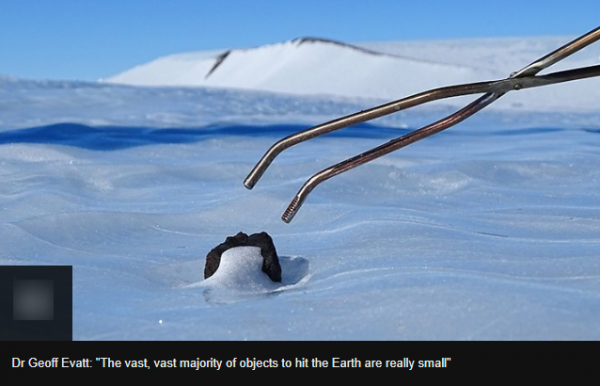
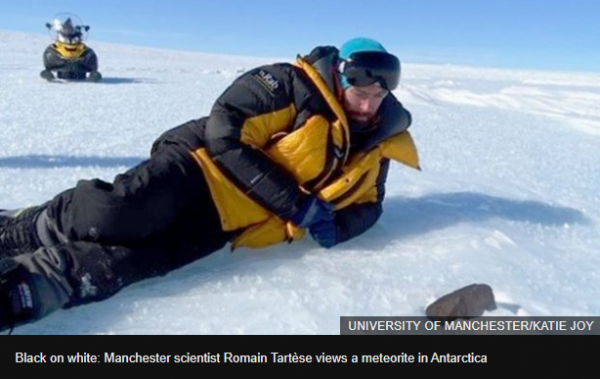

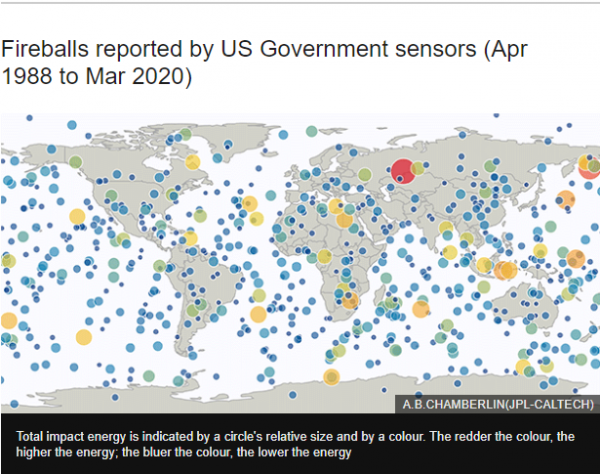



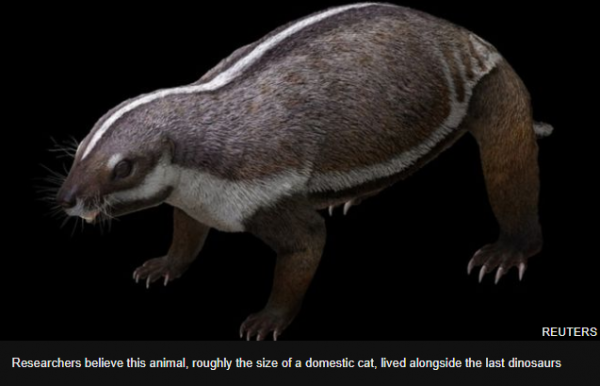

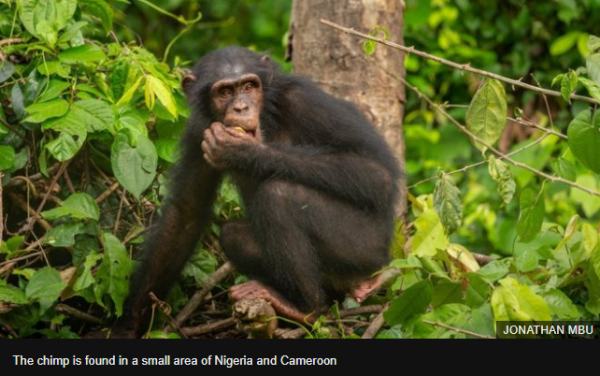
.thumb.png.70432cb2f9727ff96351a21dbdef5364.png)


.thumb.png.e3115aea89f4dfe7819c9d874a21f422.png)
.png.3fadf50fe9edc2112006ca533460d5d5.png)
.thumb.png.5e2550a7aa69b0ff4db7da50746237fe.png)